- Call us: 01444 237070
- Contact Us
- Stores
- Sign In / Register
-
- Back
- Used Cameras
- Used Accessories
- Used Lenses
- Used Video
- Used Film Equipment
- Used Stock Alert
- Used Blank Test
- Sell or Part Exchange
- Used Clearance
- Recently Added Used Equipment
- Park Picks
- All Used Black Friday Deals
- Faulty
- Trade-In
- Blog
- New in
- Call us
- Contact us
- Stores
- Sign in
- Categories
- Tips & Inspiration
- Reviews
- News
- Events
- Features
- Buying Guides
- Competitions
New Canon Mirrorless APS-C Cameras
The release of the EOS R7 and EOS R10 first generation Canon Mirrorless APS-C cameras and accompanying RF-S lenses have surpassed our expectations. This review highlights sample images, video reviews and more on how these hybrid cameras can transform your content.
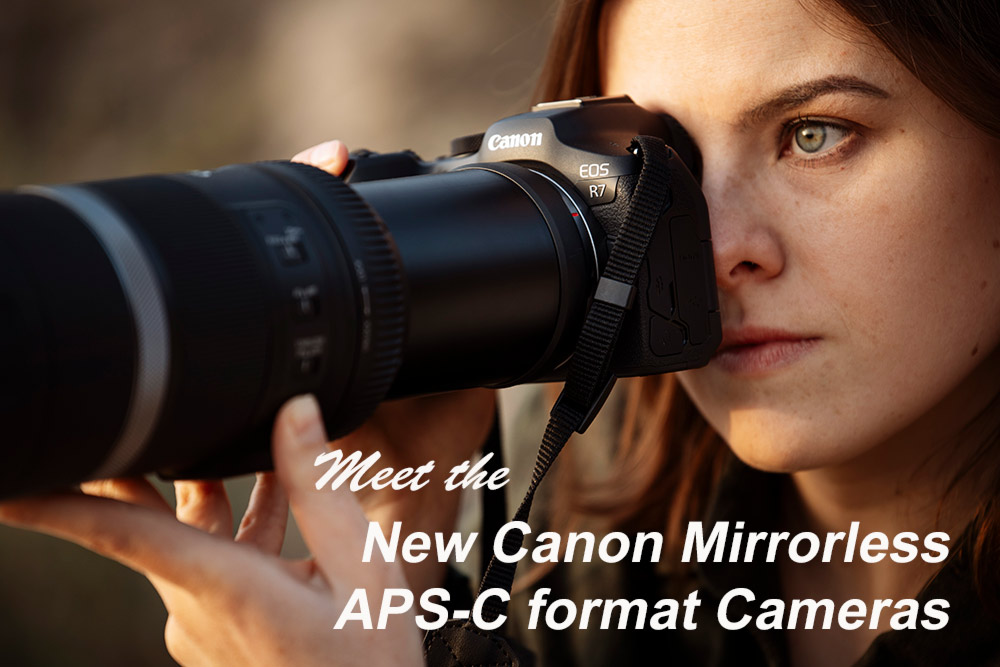
What are the new Canon Mirrorless APS-C cameras?
In May 2021 Canon released two new APS-C format mirrorless cameras – which are the flagship Canon EOS R7 and EOS R10, that can be considered a competent all-rounder. Both feature hybrid capabilities, with great stills and video technology, which steal the limelight from their DSLR counterparts. You’ll be sorely tempted to make the move to mirrorless if you’ve been shooting with a crop sensor DSLR such as the EOS 7D series, where you might consider the EOS R7 or 70D, 80D and 90D which equate to the EOS R10.
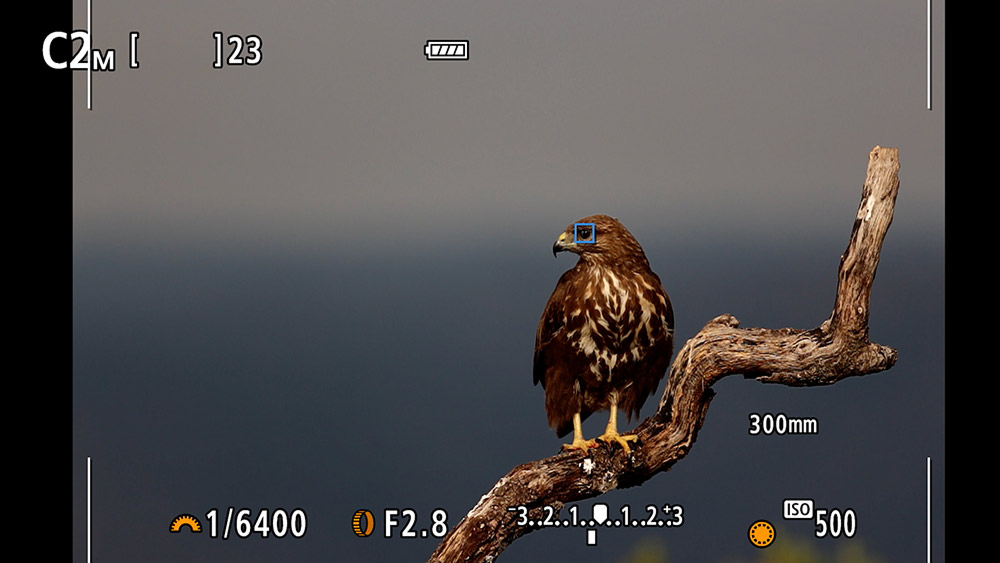
Subject detection Bird Eye using Dual Pixel CMOS AF II
Why choose APS-C format cameras over full-frame?
Photographers and videographers choose an APS-C format camera over a full-frame camera, for a variety of reasons. In the case of these Canon EOS R cameras you’ll get a 1.6x crop factor, together with a greater depth of field than with a full-frame camera. This means you can get closer to the action with an equivalent focal width lens, while having a deeper focus plane. This is ideal for several styles of photography including sports, wildlife, action and bird photographers, who will generally choose an APS-C size sensor camera.
Due to having smaller sensors, pixel density is higher with crop sensors compared to an equivalent full-frame sensor. This gives you higher perceived detail and sharpness, which is extremely beneficial for the aforementioned target subjects. This is why you will often see professional sports photographers on the sidelines of big events shooting with compact crop sensor cameras and huge telephoto lenses, rather than full-frame cameras.
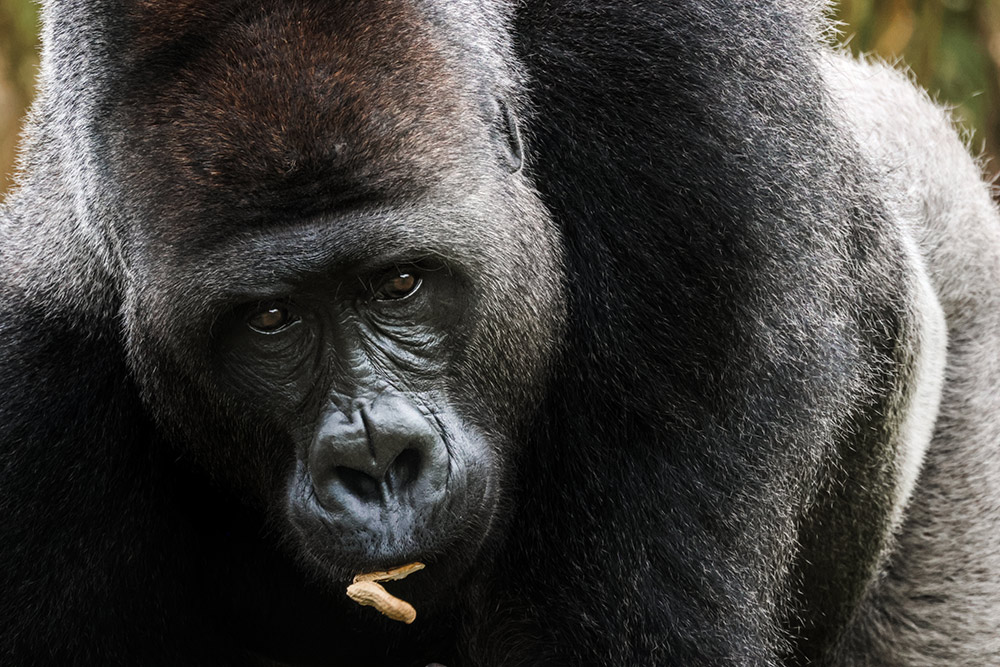
EOS R7 sample photo with RF 800mm F/11 IS STM Super Telephoto Lens. Camera settings: 1/400 sec. f/11. ISO 2000 (equivalent focal range of 1280mm)
What technology do the R7 and R10 share?
- Both of these new crop sensor bodies feature Canon’s ultra-fast DIGIC X imaging processor, which is found throughout Canon’s mirrorless range, from the high-end R3 through to the video-centric R6.
- Both bodies also boast Canon’s formidable Dual Pixel CMOS AF II, which is their deep learning AI-driven AF system. This provides exceptionally accurate AF performance with subject recognition, which includes Humans (Eyes/Face/Head/Body), Animals (Dogs, Cats and Birds) and Vehicles (Racing cars or Motor bikes).
- Mechanical shutter burst rates in both cameras will allow you to shoot up to an impressive 15fps or up to 30fps in electronic shutter (although the native full sensor burst on the R10 is 23fps – 30fps is achieved with a slight image crop). This nudges these new bodies towards and beyond the professional EOS-1D X Mark III, which shoots 20fps in Live View mode and 16fps with the optical viewfinder. The advantage of using mechanical shutter is reduced rolling shutter, which can be noticeable with particular subjects or under certain lighting conditions when shooting in Electronic shutter mode. With way, you’ll be firing frames as fast as the most professional DSLR cameras ever made.
- You can record oversampled 4K/30p video, which is beautifully crisp and smooth from both cameras, with the R7 oversampled from 7K and the R10 from 6K. Both also capture slow motion at 120p in Full HD, with 30 minute maximum clips being a thing of the past.
- Flip out LCD touchscreens are featured on both bodies, ideal for difficult shooting angles, vlogging and general useability. Whilst this may not appeal to everyone, an articulating screen will come in handy at some time or other for almost every user. Canon’s touch control is also extremely capable, letting you change camera settings intuitively from the screen.
- The EVF on both cameras also displays a range of shooting data, which is especially handy in fast paced situations where you don’t want to move your eye from the screen. Specifications for both camera EVFs is 0.39 inch OLED colour EVF with 2.36 million dots (1024x768) giving 100% view and a choice between smooth 120fps or 60fps energy-saving modes.
- The EOS R range uses Canon’s newest RF lens mount, with a whole new RF-S crop sensor category released, which includes two new lenses at release – the Canon RF-S 18-45mm f/4.5-6.3 IS STM Lens and Canon RF-S 18-150mm f/3.5-6.3 IS STM Lens. However, one of the most compelling reasons for joining Canon’s mirrorless system is the ability to also use full-frame RF lenses, as well as just about any EF or EF-S lens from your Digital SLR. This can be done with a choice of lens converters, such as the base Mount Adapter EF-EOS R or more advanced Canon Control Ring Mount Adapter EF-EOS R.
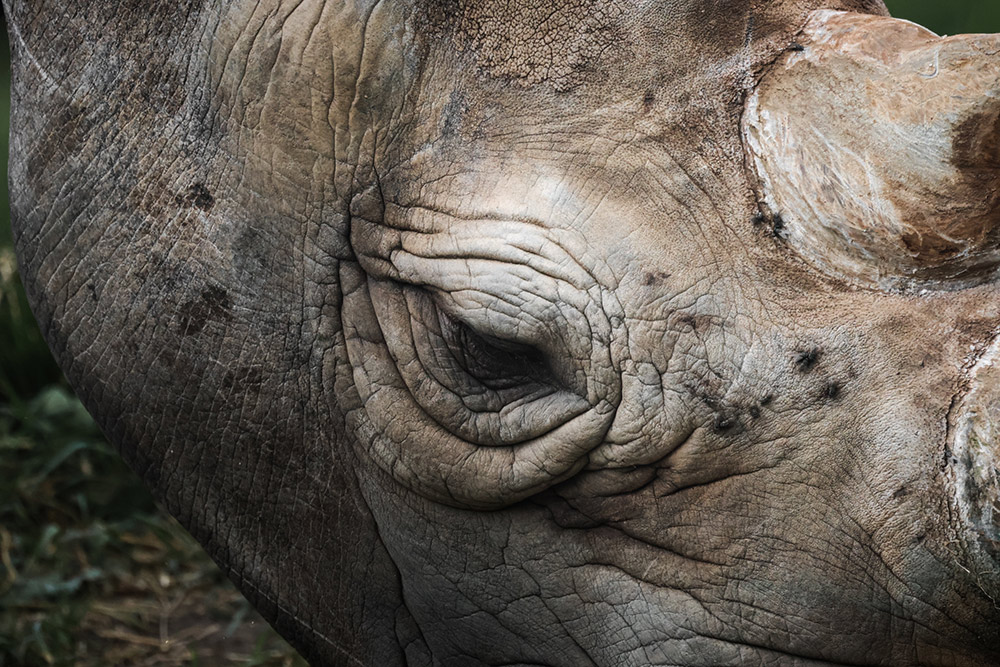
EOS R10 sample photo with RF 800mm F/11 IS STM Super Telephoto Lens. Camera settings: 1/1250 sec. f/11. ISO 2500 (equivalent focal range of 1280mm)
Making the move to APS-C mirrorless from a DSLR
Whilst there are many other similarities between these two new crop sensor mirrorless cameras, it’s fair to say the shared features listed above already present huge benefits for anyone who’s considering moving to mirrorless from their DSLR system. You can keep your existing lenses, shoot at faster frame rates, record incredible oversampled 4K video, access the latest AF system and of course you get 32.5 megapixels with the class-leading R7, which is the sweet spot for enthusiasts and professional photographers working with a crop sensor camera. 32 megapixels gives plenty of latitude for cropping as well as a higher resolution with incredible detail. On the other hand 24.2MP on the R10 is plenty for many users, allowing you to make nice sized prints and show off your creativity full-screen and on any social media channels.
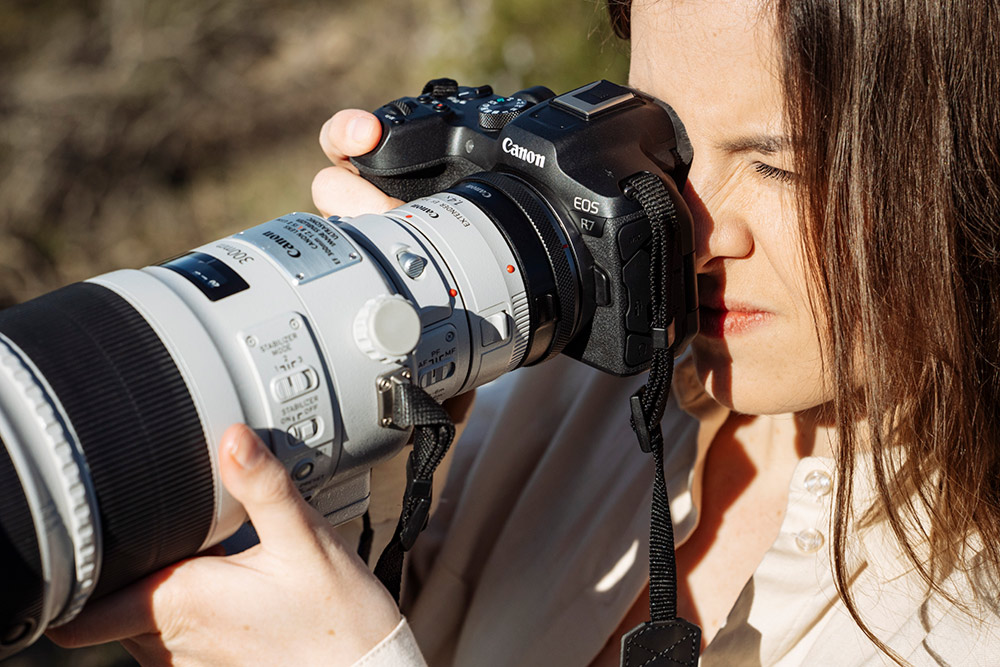
Using the APS-C format camera with EF lenses
What does the EOS R7 offer over the R10?
Key advantages which the R7 offers, include the ability to record in Canon Log 3, which captures a wider dynamic range. You can also record long-form content up to six hours maximum duration (rather than two with the R10).
Perhaps most noticeably, is the R7’s addition of dual SD card slots and IBIS (In-body stabilisation). The 5-axis in-body stabilisation system combines with RF lenses to provide more stable shooting, with the Canon RF-S 18-45mm f/4.5-6.3 IS STM Lens rising from 4-stops to 6.5-stops of compensation and the Canon RF-S 18-150mm f/3.5-6.3 IS STM Lens going from 4.5-stops to 7-stops. You’ll see similar gains with other RF lenses, rising to an incredible 8-stops with RF 24-105mm F4 L IS USM, for both video and stills.
The R7’s higher resolution and dual SD memory card slots ensures it is destined to be used as a second body for professionals who want the extra 1.6x reach for certain shooting situations, thanks to the ability to share lenses with a full-frame camera. You also get an auto-horizon levelling feature, which is sure to be appreciated when shooting in fast-paced settings.

The supplied LP-E6NH battery in the R7 also outguns the R10’s LP-E17, letting you capture around 770/500 shots using the LCD/EVF respectively, over 430/260 with the R10.
Key camera differences at a glance:
|
|
||
|
Image sensor |
32.5MP (APS-C) CMOS |
24.2MP (APS-C) CMOS |
|
Memory card |
Dual high speed UHS-II Card slots |
Single high speed UHS-II Card slot |
|
IBIS |
7-stop combined IS with RF lenses (8-stops with RF 24-105mm F4 L IS USM) |
RF lens-based IS only |
|
Max frame rate |
15fps mechanical, 30fps electronic |
15fps mechanical, 23fps electronic (30fps with crop) |
|
Max. video recording |
Oversampled 4K/30p from 7K, 6-hour limit |
Oversampled 4K/30p from 6K, 2-hour limit |
|
Canon log |
Canon Log 3 |
N/A |
|
Shooting feature |
Auto leveling horizon |
N/A |
|
Max. battery life LCD/EVF |
770/500 shots |
430/260 shots |
|
Weight |
Approx. 530g (612g with card and battery) |
Approx. 382g (429g with card and battery) |
The First RF-S lenses for crop sensor EOS R cameras
Canon released two crop sensor format lenses in an entirely new mirrorless RF lens category, which carry the RF-S name (rather than RF for full-frame). The primary benefit of a native format APS-C lens is the compact form and ultra lightweight they offer. At the time of launch these two kit lenses are the:
- Canon RF-S 18-45mm f/4.5-6.3 IS STM Lens – a great general purpose walk around zoom lens with an equivalent full-frame focal range of 29-72mm. This model includes 4-stops of IS which rises to 6.5 when paired with camera with IBIS including the EOS R7.
- Canon RF-S 18-150mm f/3.5-6.3 IS STM Lens – With an impressive 8.3x optical zoom range this APS-C lens provides an equivalent focal zoom range of 29-240mm in full-frame terms. built-in IS performs at 4.5-stops rising to 7-stops with camera IBIS.
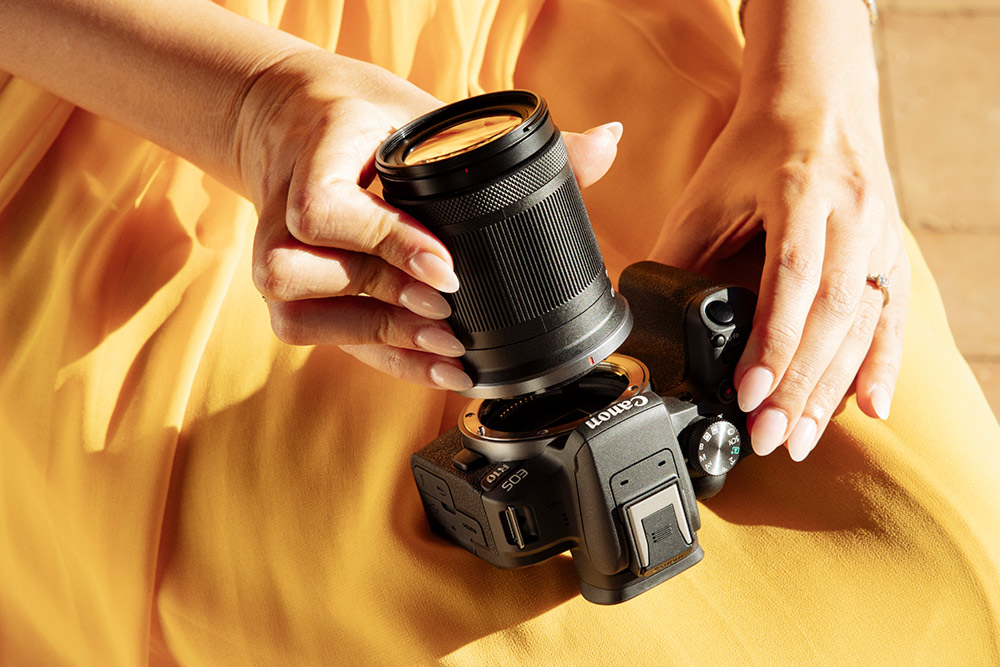
Both of these new lenses offer access to compact and lightweight optics straight from the get-go, and share a fast and quiet Stepping Motor (STM) which is fully compatible with Dual Pixel CMOS AF II. This means you can focus on and track subjects including humans, Animals and Vehicles at high frame rates which both cameras offer. Either lens is also extremely good at capturing video with great detail and versatile focal widths. You can get either lens in a choice of kits:
- Canon EOS R10 with RF-S 18-45mm IS STM Lens
- Canon EOS R10 with RF-S 18-150mm IS STM Lens
- Canon EOS R7 with RF-S 18-150mm IS STM Lens
When using full-frame RF lenses you’ll experience incredible image quality combined with 1.6x greater reach as well as combined lens and camera stabilisation. Based on primary users, telephoto lenses are sure to be the most popular, with these current RF lenses leading the pack:
- RF 100-400mm F/5.6-8 IS USM provides an equivalent focal range of 160-640mm
- RF 100-500mm F/4.5-7.1 L IS USM provides an equivalent focal range of 160-800mm
- RF 600mm F/11 IS STM provides an equivalent focal range of 960mm
- RF 800mm F/11 IS STM provides an incredible equivalent focal range of 1280mm
Canon’s pro telephoto prime RF 400mm F2.8 L IS USM will give you 640mm equivalent, with the brightest aperture available in their RF telephoto series at the time of launch.
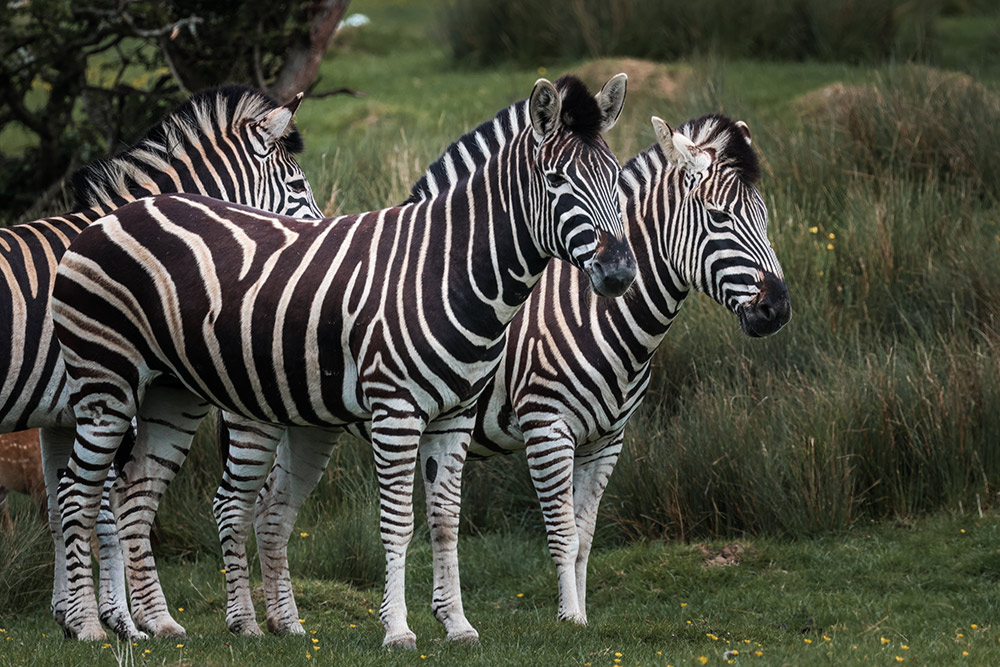
EOS R7 sample photo with RF 100-500mm F/4.5-7.1 L IS USM Lens at 500mm. Camera settings: 1/640 sec. f/7.1. ISO 400
Video reviews
Watch our video reviews of both new Canon APS-C cameras, starting with Canon R7 First Look Video Review:
Canon R10 First Look Video Review:
Summary
Many photographers had been waiting patiently for Canon to release a crop sensor mirrorless camera, designed to accommodate greater reach for sports, action, bird and wildlife photography. These users can now harness the brut power of the EOS R7, eminently worthy of the flagship status that it has received.
The R7 is relatively compact, extremely fast and utilises the latest Dual Pixel CMOS AF II together with a newly developed 32.5 megapixel sensor. It also features in-body stabilisation and dual cards can be configured in a variety of ways to suit your workflow. A flip-out screen provides versatile shooting options and battery life is comparable to any DSLR which has gone before.
Several connectivity options also provide fast ways to instantly share your work, edit shots using Canon’s online platform and you can also record video in a range of qualities and speeds, including beautiful oversampled 4K/30 with Canon Log 3 profile.
For newcomers to interchangeable lens cameras, the EOS R10 offers a system which can grow with your skills, with extremely capable features in-line with some of the best consumer-level DSLRs ever made. Despite including some advanced features the body remains incredibly compact, which will appeal to those who don’t want the bulk and weight of DSLRs or full-frame systems.

EOS R10 sample photo with RF 100-400mm F/5.6-8 IS USM Lens at 325mm. Camera settings: 1/320 sec. f/8. ISO 320
These RF-S lenses are smaller and lighter, and we’re expecting plenty more options as Canon develops this system. Meanwhile you can use virtually every new Canon lens and a wealth of cost-effective used Canon lenses, whether that be RF, EF or EF-S using a mount converter.
There’s never been a better time to switch to mirrorless for anyone who prefers smaller and lighter gear, together with the pixel density and greater reach, which a crop sensor provides. We’re certain you’ll agree once you see what these new bodies are capable of, so why not check out the throughly professional EOS R7 here or the excellent EOS R10 all-rounder to reserve yours today.
Share this post:
By Nick Dautlich on 24/05/2022
Nick Dautlich
Senior Content Writer and Product Reviewer
Nick Dautlich is the Senior Content Writer and Product Reviewer at Park Cameras, with over 15 years of photography experience. A Sony Imaging Professional and expert reviewer, Nick has worked with major brands such as Canon, Sony and Nikon. His work is also featured on Vanguard World UK’s website, Capture Landscapes, and Shutter Evolve. Nick’s photography includes National Trust projects and magazine covers and he is passionate about landscapes and storytelling. Nick also enjoys hiking and teaching his children about nature. Learn more on his profile page.

Trade in your old equipment
Fast and easy trade in service ensures your old gear is collected efficiently and you are paid quickly! It's very simple to trade in your unwanted photography gear. Just head over to our dedicated Sell or Part Exchange page, fill out the details, and we'll get back to you with an offer for your old gear. Take the cash, or put it towards the cost of your new gear. It's up to you! Find out more
sign up to the newsletter
Keep up to date on the latest photography news, events and offers. Sign up now